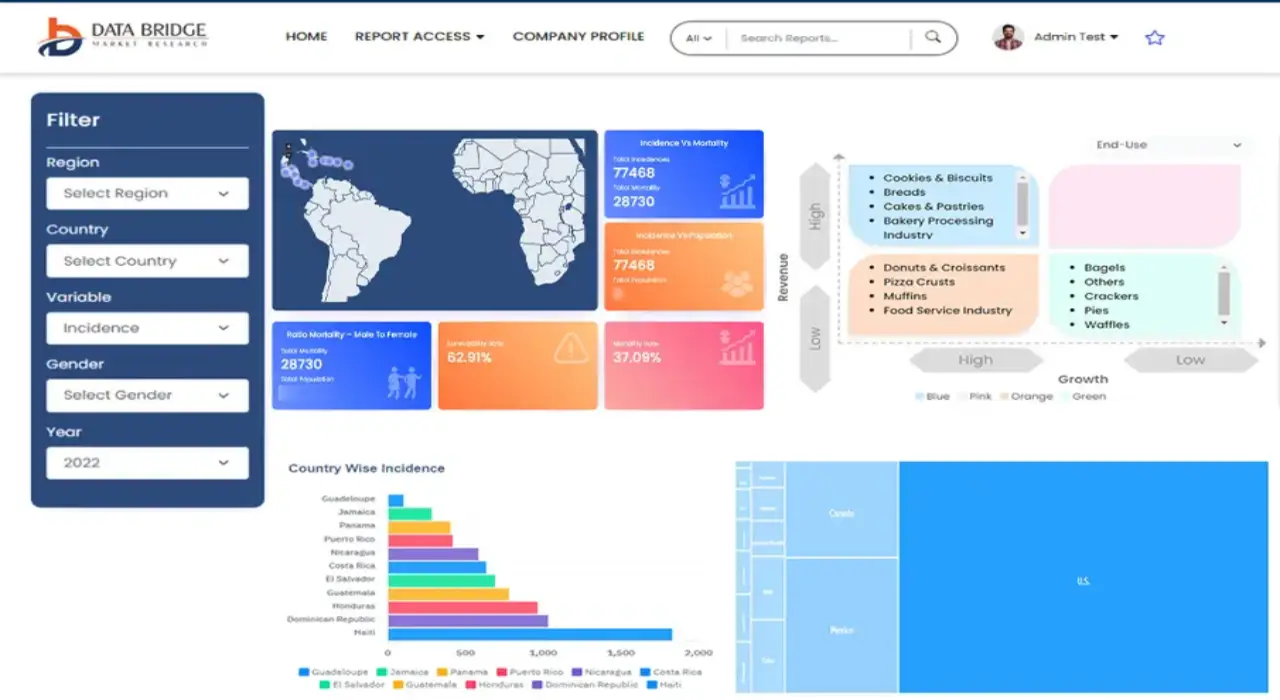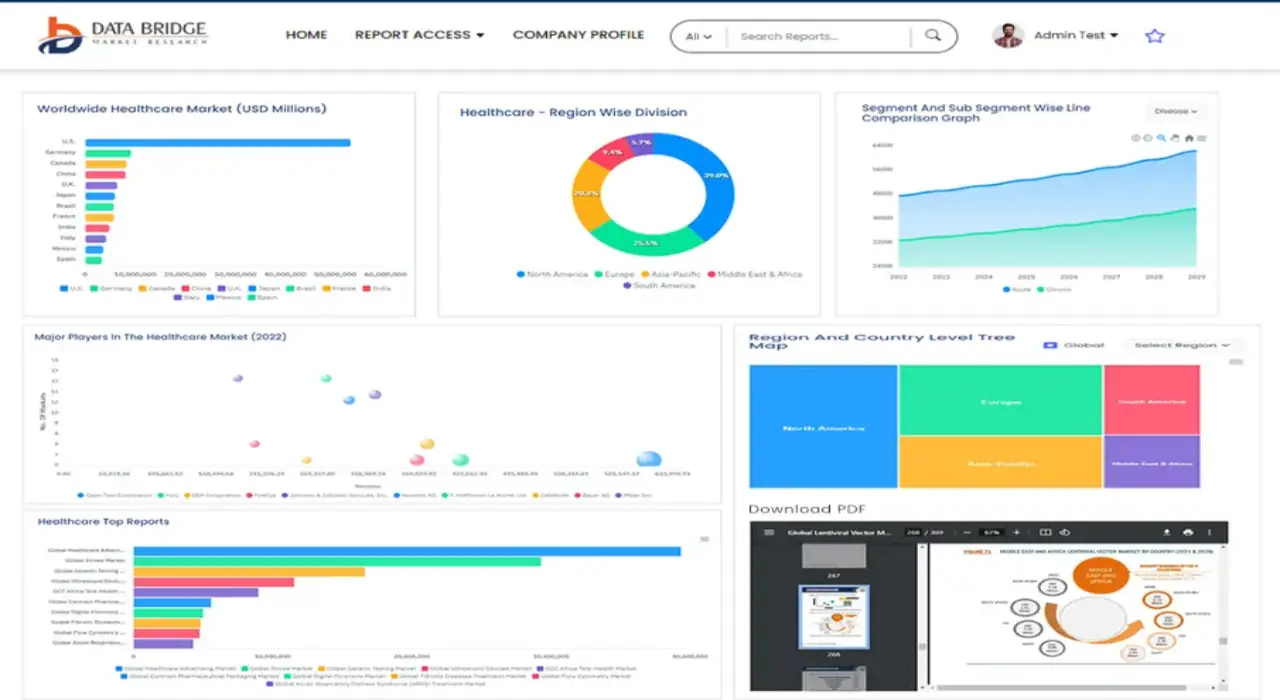Global Inventory Management Software Market
Tamanho do mercado em biliões de dólares
CAGR :
% 
 USD
1.85 Billion
USD
3.10 Billion
2024
2032
USD
1.85 Billion
USD
3.10 Billion
2024
2032
| 2025 –2032 | |
| USD 1.85 Billion | |
| USD 3.10 Billion | |
|
|
|
>Global Inventory Management Software Market Segmentation, By End-Use (Manufacturing, Medical/Healthcare, Retail, Automotive, Oil & Gas), Organization Size (Large Enterprise, SMEs), Deployment Model (On-Premise, Cloud), Application (Order Management, Asset Tracking, Service Management, Product Differentiation, Inventory Optimization), Type (Manually Managed Inventory System, Barcode Scanning System, Advanced Radio Frequency System (RFID)) – Industry Trends and Forecast to 2032
Inventory Management Software Market Analysis
The expanding e-commerce industry and current technological developments offer enormous potential to global solution providers. Companies provide solutions that can reduce the amount of time spent monitoring and managing a company's assets. One solution, inventory management software, is currently gaining significant traction. This is due to the growing popularity of online shopping and rental services. These industries rely heavily on inventory, so monitoring is critical.
Inventory Management Software Market Size
Global inventory management software market size was valued at USD 1.85 billion in 2024 and is projected to reach USD 3.10 billion by 2032, with a CAGR of 6.62% during the forecast period of 2025 to 2032.
Report Scope and Market Segmentation
|
Attributes |
Inventory Management Software Key Market Insights |
|
Segmentation |
|
|
Countries Covered |
U.S., Canada and Mexico in North America, Germany, France, U.K., Netherlands, Switzerland, Belgium, Russia, Italy, Spain, Turkey, Rest of Europe in Europe, China, Japan, India, South Korea, Singapore, Malaysia, Australia, Thailand, Indonesia, Philippines, Rest of Asia-Pacific (APAC) in the Asia-Pacific (APAC), Saudi Arabia, U.A.E, South Africa, Egypt, Israel, Rest of Middle East and Africa (MEA) as a part of Middle East and Africa (MEA), Brazil, Argentina and Rest of South America as part of South America |
|
Key Market Players |
Manhattan Associates, (U.S.), Blue Yonder Group, Inc. (U.S.), HighJump (U.S.), Oracle (U.S.), IBM Corporation (U.S.), SAP SE (Germany), ACL Digital (U.S.), VMWare Inc. (U.S.), Telefonaktiebolaget LM Ericsson. (Sweden), Hewlett Packard Enterprise Development LP (U.S.), Softeon (U.S.), Telco Systems (U.S.), NEC Corporation (Japan), Juniper Networks Inc.(U.S.), Infor. (U.S.), Versa Networks Inc., (U.S.) and Cisco Systems Inc.(U.S.) |
|
Market Opportunities |
|
Inventory Management Software Market Definition
Inventory management software is software that is used to track inventory levels, orders, sales, and deliveries. The manufacturing industry can also be used to create a piece order, bill of materials, and other production-related documents. Inventory management software is used by businesses to avoid product overstock and outages. It is a tool for organizing inventory data previously stored in hard copy or spreadsheets. Inventory management solutions provide real-time visibility of supply and demand, allowing users to be aware of inventory updates.
Inventory Management Software Market Dynamics
Drivers
- Growing need for inventory accuracy
The increasing emphasis of businesses on Omni-channel systems to bridge the gap between online and offline sales is driving the adoption of supply chain solutions such as inventory management. To efficiently serve daily orders, store inventory accuracy is essential. As a result, many vendors across various industry verticals are adopting inventory management software in their warehouses, which benefits them in maintaining inventory efficiently and maintaining customers online and offline under the Omni-channel platform. This also allows customers to access goods from any location within an organization quickly. Omni-channel commerce benefits from improved customer experience, increased sales and traffic, and improved data collection, all of which drive the growth of inventory management solutions.
- Improved product and solution offerings
The global inventory management software market will be highly competitive in the coming years. This is due to the emergence of various players offering solutions integrated with technologies that have the potential to transform the inventory management sector completely. Inventory management software providers are adopting technologies that can support automation as automation gains traction in various business verticals.
Furthermore, established organizations are acquiring a variety of new and small businesses in order to maintain their dominance in the global inventory management software market. This strategy enables businesses to leverage the technology of smaller companies to improve their product portfolio and gain a competitive advantage over competitors. This strategy also allows the organization to strengthen its grip on the global inventory management software market within the time frame projected.
Opportunities
- Adoption of advanced technologies
The increasingly widespread adoption of smartphones and other mobile devices, the rapidly growing popularity of e-commerce, the growing need to mitigate supply chain inefficiencies, and the rising demand for RFID technology are the major factors driving the inventory management software market, among others.
Restraints
- Lack of awareness
However, high investment costs and consumer reluctance to adopt legacy systems are among the major factors restraining market growth and will continue to challenge the inventory management software market during the forecast period.
This inventory management software market report provides details of new recent developments, trade regulations, import-export analysis, production analysis, value chain optimization, market share, impact of domestic and localized market players, analyses opportunities in terms of emerging revenue pockets, changes in market regulations, strategic market growth analysis, market size, category market growths, application niches and dominance, product approvals, product launches, geographic expansions, technological innovations in the market. To gain more info on the inventory management software market contact Data Bridge Market Research for an Analyst Brief, our team will help you take an informed market decision to achieve market growth.
COVID-19 Impact on Inventory Management Software Market
Over the last 18 months, most industries around the world have suffered. This is due to significant disruptions in their respective manufacturing and supply-chain operations due to various precautionary lockdowns and other restrictions imposed by governing authorities worldwide. The same applies to the global inventory management software market. Furthermore, consumer demand has subsequently decreased as people are now more focused on eliminating non-essential expenses from their respective budgets as the general economic status of the majority of people has been severely impacted by this outbreak. These aforementioned elements are expected to burden the revenue trajectory of the global inventory management software market over the forecast timeline. However, as respective governing bodies begin to lift these imposed lockdowns, the global inventory management software market is expected to recover.
Inventory Management Software Market Scope
The inventory management software market is segmented on the basis of end-use, organization size, deployment model, application and type. The growth amongst these segments will help you analyse meagre growth segments in the industries and provide the users with a valuable market overview and market insights to help them make strategic decisions for identifying core market applications.
Type
- Manually Managed Inventory System
- Barcode Scanning System
- Advanced Radio Frequency System (RFID)
Deployment model
- Cloud
- On-premise
Organization size
- Small and Medium Enterprises(SMEs)
- Large Enterprises
Applications
- Order Management
- Asset Tracking
- Service Management
- Product Differentiation
- Inventory Optimization
End-Use
- Manufacturing
- Medical/Healthcare
- Retail
- Automotive
- Oil & Gas
Inventory Management Software Market Regional Analysis
The inventory management software market is analyzed and market size insights and trends are provided by country, end-use, organization size, deployment model, application and type as referenced above.
The countries covered in the inventory management software market report are U.S., Canada and Mexico in North America, Germany, France, U.K., Netherlands, Switzerland, Belgium, Russia, Italy, Spain, Turkey, Rest of Europe in Europe, China, Japan, India, South Korea, Singapore, Malaysia, Australia, Thailand, Indonesia, Philippines, Rest of Asia-Pacific (APAC) in the Asia-Pacific (APAC), Saudi Arabia, U.A.E, South Africa, Egypt, Israel, Rest of Middle East and Africa (MEA) as a part of Middle East and Africa (MEA), Brazil, Argentina and Rest of South America as part of South America
The North America inventory management software market dominates the global market because of the presence of several retailers and manufacturing companies that are focusing on Omni channel platforms to increase operational efficiencies. The platform allowed businesses in the United States and Canada to store third-party inventory. Another factor driving market growth is the increasing popularity of cloud-based solutions, which offer high cost and maintenance savings when compared to traditional inventory management systems.
Asia-Pacific is set to grow with the highest growth rate due to rising demand for RFID technology, increasing widespread adoption of smartphones and other mobile devices, rapidly growing popularity of e-commerce, rising need to mitigate supply chain inefficiencies, and rising demand for RFID technology in this region.
The country section of the report also provides individual market impacting factors and changes in market regulation that impact the current and future trends of the market. Data points like down-stream and upstream value chain analysis, technical trends and porter's five forces analysis, case studies are some of the pointers used to forecast the market scenario for individual countries. Also, the presence and availability of Global brands and their challenges faced due to large or scarce competition from local and domestic brands, impact of domestic tariffs and trade routes are considered while providing forecast analysis of the country data.
Inventory Management Software Market Share
The inventory management software market competitive landscape provides details by competitor. details included are company overview, company financials, revenue generated, market potential, investment in research and development, new market initiatives, Global presence, production sites and facilities, production capacities, company strengths and weaknesses, product launch, product width and breadth, application dominance. The above data points provided are only related to the companies' focus related to inventory management software market.
Inventory Management Software Market Leaders Operating in the Market Are:
- Manhattan Associates, (U.S.)
- Blue Yonder Group, Inc. (U.S.)
- HighJump (U.S.)
- Oracle (U.S.)
- IBM Corporation (U.S.)
- SAP SE (Germany)
- ACL Digital (U.S.)
- VMWare Inc. (U.S.)
- Telefonaktiebolaget LM Ericsson (Sweden)
- Hewlett Packard Enterprise Development LP (U.S.)
- Softeon (U.S.)
- Telco Systems (U.S.)
- NEC Corporation (Japan)
- Juniper Networks Inc. (U.S.)
- Infor. (U.S.)
- Versa Networks Inc., (U.S.)
- Cisco Systems Inc.(U.S.)
SKU-
Obtenha acesso online ao relatório sobre a primeira nuvem de inteligência de mercado do mundo
- Painel interativo de análise de dados
- Painel de análise da empresa para oportunidades de elevado potencial de crescimento
- Acesso de analista de pesquisa para personalização e customização. consultas
- Análise da concorrência com painel interativo
- Últimas notícias, atualizações e atualizações Análise de tendências
- Aproveite o poder da análise de benchmark para um rastreio abrangente da concorrência
Metodologia de Investigação
A recolha de dados e a análise do ano base são feitas através de módulos de recolha de dados com amostras grandes. A etapa inclui a obtenção de informações de mercado ou dados relacionados através de diversas fontes e estratégias. Inclui examinar e planear antecipadamente todos os dados adquiridos no passado. Da mesma forma, envolve o exame de inconsistências de informação observadas em diferentes fontes de informação. Os dados de mercado são analisados e estimados utilizando modelos estatísticos e coerentes de mercado. Além disso, a análise da quota de mercado e a análise das principais tendências são os principais fatores de sucesso no relatório de mercado. Para saber mais, solicite uma chamada de analista ou abra a sua consulta.
A principal metodologia de investigação utilizada pela equipa de investigação do DBMR é a triangulação de dados que envolve a mineração de dados, a análise do impacto das variáveis de dados no mercado e a validação primária (especialista do setor). Os modelos de dados incluem grelha de posicionamento de fornecedores, análise da linha de tempo do mercado, visão geral e guia de mercado, grelha de posicionamento da empresa, análise de patentes, análise de preços, análise da quota de mercado da empresa, normas de medição, análise global versus regional e de participação dos fornecedores. Para saber mais sobre a metodologia de investigação, faça uma consulta para falar com os nossos especialistas do setor.
Personalização disponível
A Data Bridge Market Research é líder em investigação formativa avançada. Orgulhamo-nos de servir os nossos clientes novos e existentes com dados e análises que correspondem e atendem aos seus objetivos. O relatório pode ser personalizado para incluir análise de tendências de preços de marcas-alvo, compreensão do mercado para países adicionais (solicite a lista de países), dados de resultados de ensaios clínicos, revisão de literatura, mercado remodelado e análise de base de produtos . A análise de mercado dos concorrentes-alvo pode ser analisada desde análises baseadas em tecnologia até estratégias de carteira de mercado. Podemos adicionar quantos concorrentes necessitar de dados no formato e estilo de dados que procura. A nossa equipa de analistas também pode fornecer dados em tabelas dinâmicas de ficheiros Excel em bruto (livro de factos) ou pode ajudá-lo a criar apresentações a partir dos conjuntos de dados disponíveis no relatório.















